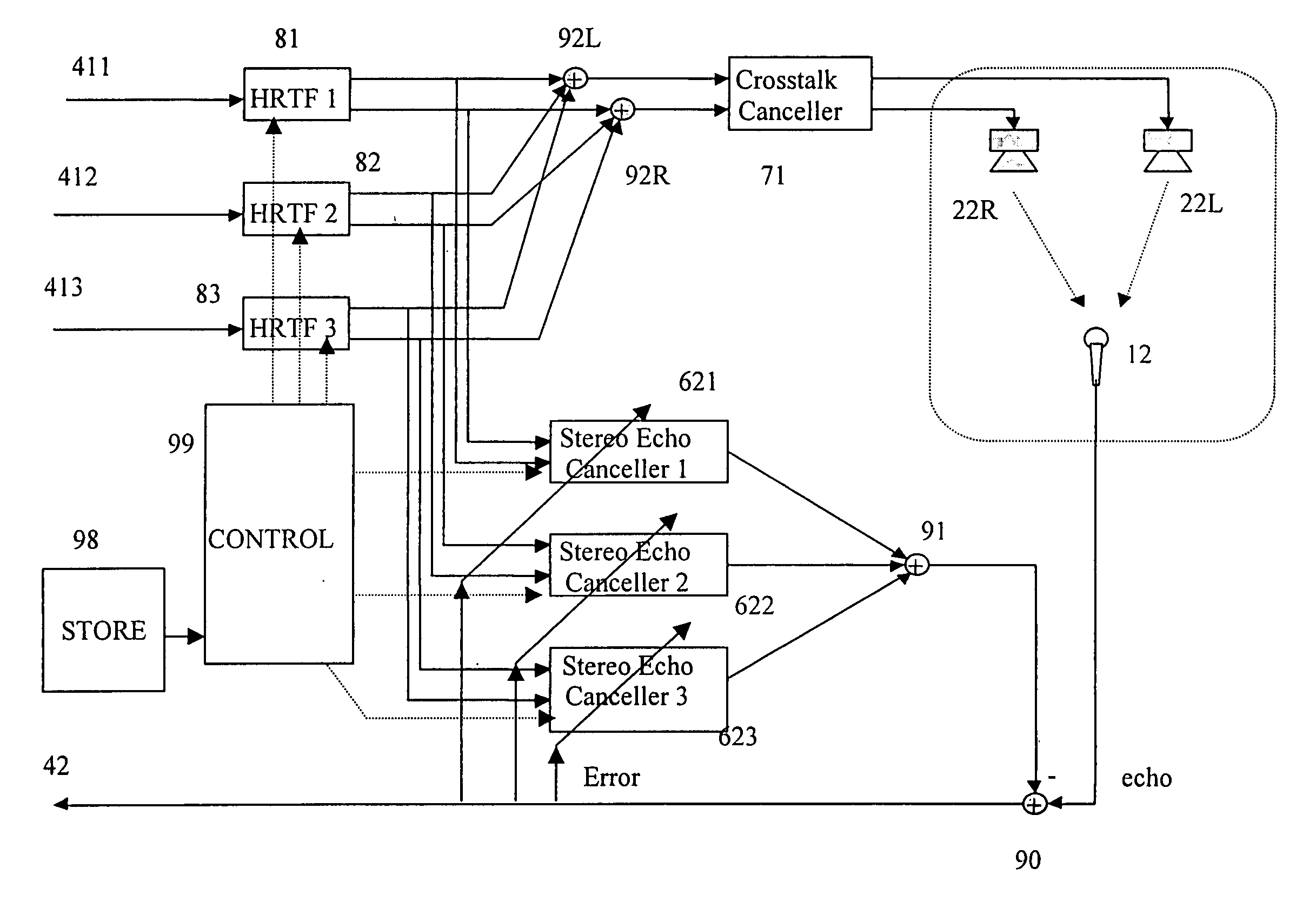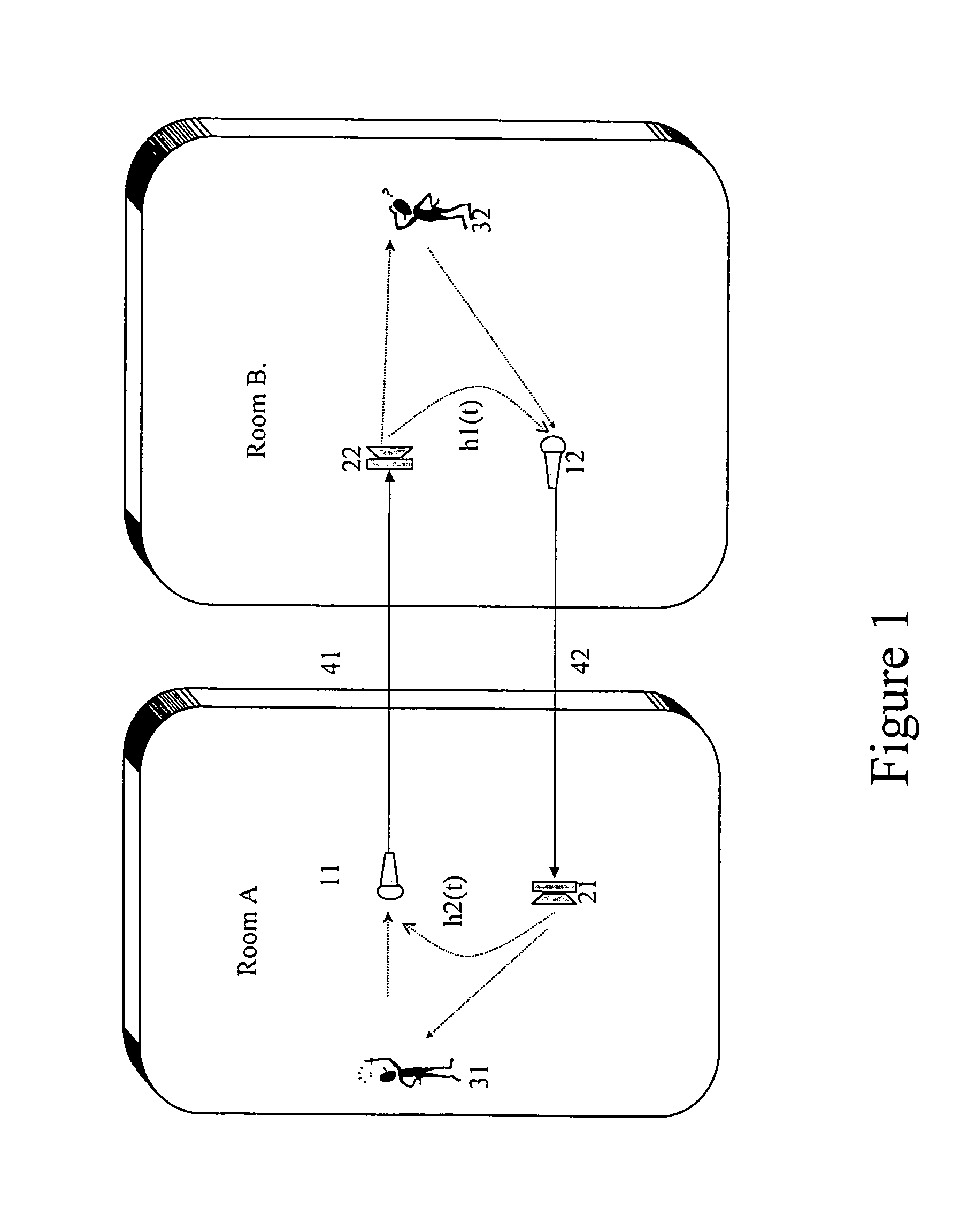Echo cancellation
a cancellation and echo technology, applied in the field of echo cancellation, can solve the problems of inability to use body-mounted devices, inability to provide special services for subscribers, instability and howling,
- Summary
- Abstract
- Description
- Claims
- Application Information
AI Technical Summary
Benefits of technology
Problems solved by technology
Method used
Image
Examples
Embodiment Construction
[0029]The embodiments of FIGS. 6, 7 and 8 apply the principles of the invention to a transaural system—that is, one in which each incoming signal 411, 412, 413 is processed by a filter bank 81, 82, 83 with filter settings appropriate to allow two loudspeakers 22L, 22R to be used to reproduce the sound to be heard by the respective left and right ears of a listener. These settings are known as the “Head Related Transfer Function” (HRTF). Filtering 71 is used to eliminate crosstalk between left speaker and right ear, and vice versa. The principles can also be applied to panned stereo systems (in which the same mono signal is transmitted from both loudspeakers, with relative intensities selected to place the virtual sound source in the correct position) or ambisonic systems (in which two or more loudspeakers are controlled to reproduce the original sound field's wavefronts) by replacing the Head Related Transfer function filter banks (HRTFs) with appropriate scaling into the required n...
PUM
 Login to View More
Login to View More Abstract
Description
Claims
Application Information
 Login to View More
Login to View More - R&D
- Intellectual Property
- Life Sciences
- Materials
- Tech Scout
- Unparalleled Data Quality
- Higher Quality Content
- 60% Fewer Hallucinations
Browse by: Latest US Patents, China's latest patents, Technical Efficacy Thesaurus, Application Domain, Technology Topic, Popular Technical Reports.
© 2025 PatSnap. All rights reserved.Legal|Privacy policy|Modern Slavery Act Transparency Statement|Sitemap|About US| Contact US: help@patsnap.com



